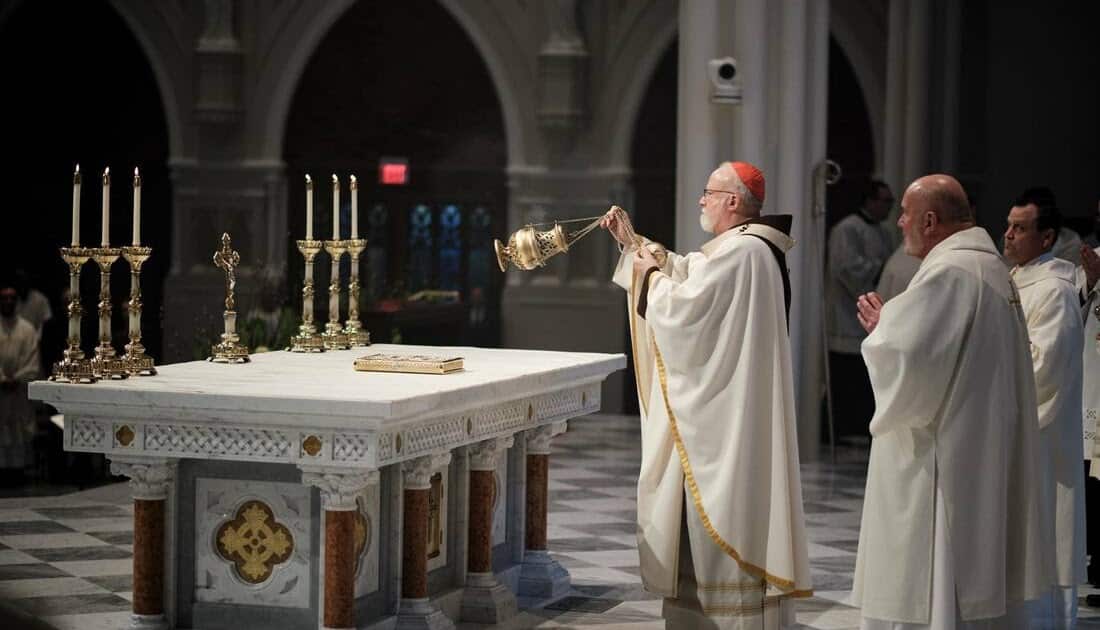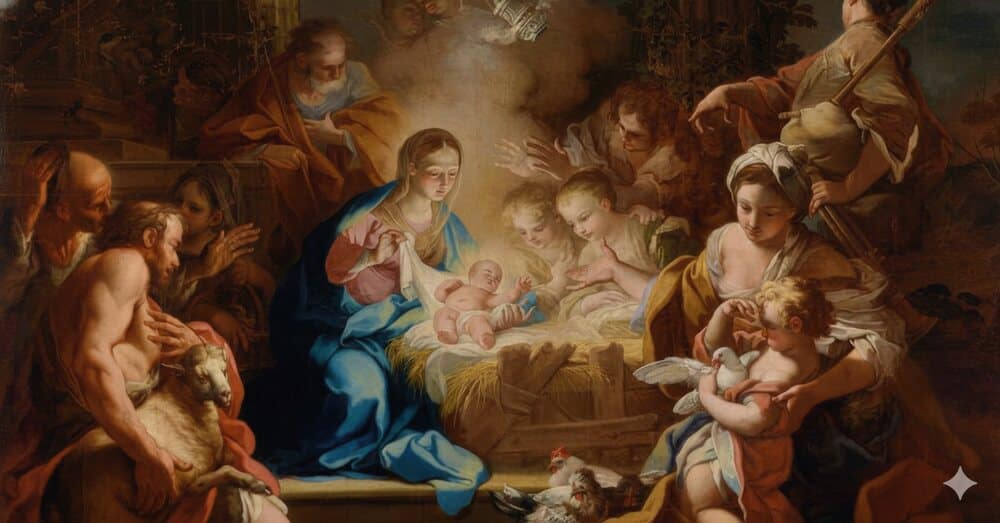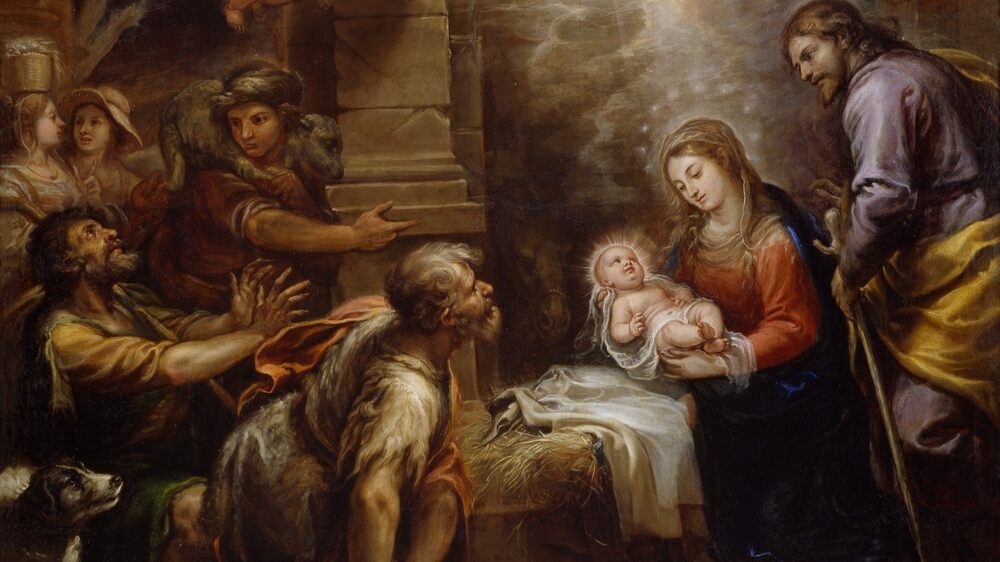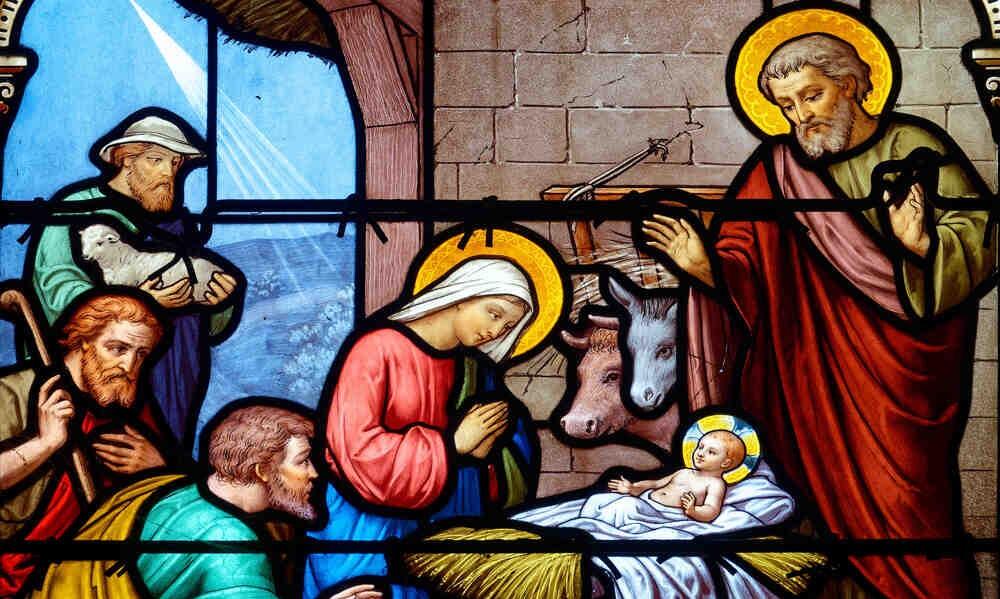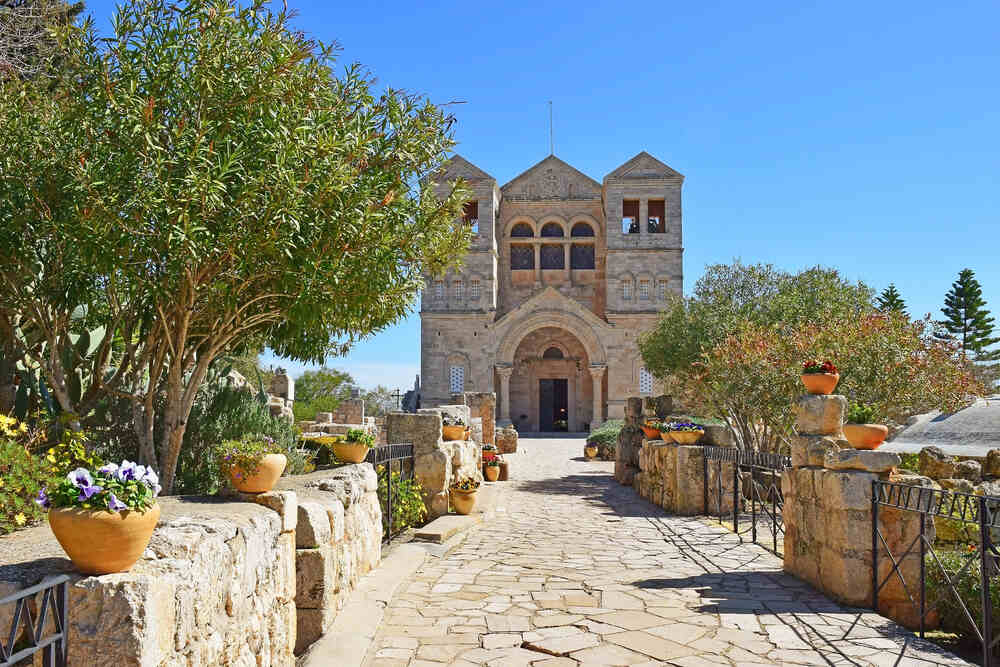In the article What Are the Parts of the Mass and Their Meaning?, we explain the structure of the Holy Mass, which consists of four fundamental moments: Introductory Rites, Liturgy of the Word, Liturgy of the Eucharist, and Concluding Rites. Each of these fulfills a specific function within the celebration.
In this context, the Introductory Rites play a fundamental role, as they dispose the faithful to enter into God’s presence with due recollection. Through the entrance chant, the priest’s greeting, the penitential act, the Gloria, and the collect prayer, the faithful transition from the everyday to the sacred, preparing themselves to listen to the Word of God and celebrate the Eucharistic sacrifice.
In this article, we will explore the meaning and structure of these rites, drawing on the Roman Missal and the liturgical tradition of the Church.
You can use the Catholic Mass Times app to find the nearest Catholic church with Mass, Confession, and Adoration schedules. It will surely be useful! Download it now.
The Introductory Rites are:
1. Entrance Procession

The Holy Mass begins with the entrance procession. This march, led by the priest, represents the Savior’s entry into the world, through which His sacrifice and offering began from the Incarnation.
In solemn Masses, the celebrant is preceded by the cross banner, whose sacrifice is about to be renewed. Behind it come the acolytes, carrying lit candles, symbolizing the entrance of the light that illuminates every person. Then follow the thurifers, who carry the censers, whose fragrance represents the aroma of praise to God and the good odor of Christ. Also entering are the minor ministers, who remind us of the prophets of the Old Testament and the apostles of the New Testament. Closing the procession, the celebrant advances, who represents Christ Himself.
This first introductory rite reminds us of the advice from Sacred Scripture:
Walk in my presence and be blameless. (Gen. 17:1)
This march reminds us that our lives are a journey to Heaven. The Holy Mass is a foretaste of the heavenly banquet. With God’s grace and transfigured with Christ who gives Himself to us in the Blessed Sacrament, we can achieve the perfection of love.
At this moment, we the faithful must prepare ourselves to enter into the presence of God. St. Francis de Sales teaches:
From the beginning until the priest ascends the altar, prepare yourself along with him, which you will do by placing yourself in the presence of God, recognizing your unworthiness and asking for forgiveness of your faults.
2. Ascending and Kissing the Altar
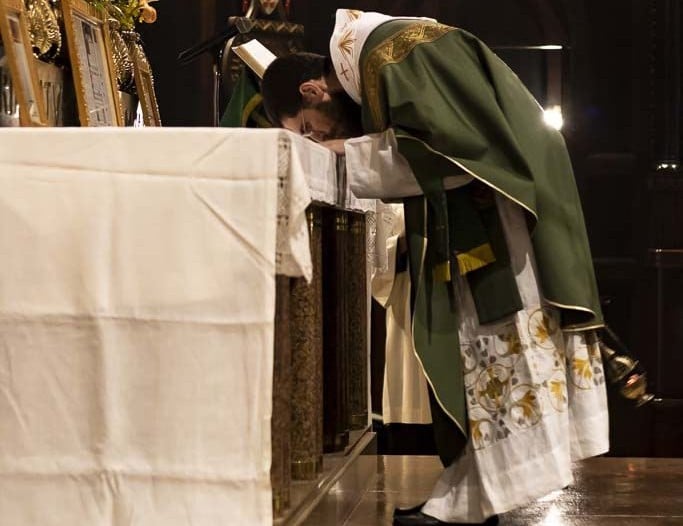
When the procession reaches the sanctuary, the celebrant ascends the altar. The altar is the holy mountain, the new Calvary. Let us ascend with the priest towards Golgotha to witness the renewal of the sacrifice.
The altar occupies the most sacred place in the church. It should be in an elevated position, closer to God, and made of stone. There, the sacrifice of the spotless Lamb will be offered. It is the sacred table upon which Jesus Christ instituted the Eucharist. It also represents the Cross, where Christ sacrificed Himself for our redemption. Furthermore, it resembles the rock of the sepulcher on which His body was placed. Lastly, it is the heavenly throne upon which the Immolated Victim is seated.
Next, the priest kisses the altar where he will perform the sacred mystery. There he kisses Christ himself who, as St. Paul teaches, is the cornerstone. For the Church Fathers, it was the kiss to the sepulcher where Christ lay sleeping.
With the kiss, the relics of the martyrs at the foot of the altar are also venerated. Those who have gloriously shed their blood for Jesus Christ rest at the foot of the altar where the Blood of the Lord is offered. They are intimately united with the Lamb of God through the torments they suffered. It is right that they triumph with Him.
The Church, bride of Christ, in the person of the priest, greets her Beloved. We are all called to love Him, to surrender ourselves to Him, and to give our lives for Him. The kiss of the altar is an act of delicacy and fidelity, full of tenderness towards the Lord. It repairs the horrible kiss of Judas, who betrayed Him to the Jews with that gesture.
- You may be interested in: The Altar, Martyrdom, and Relics
3. Incensation
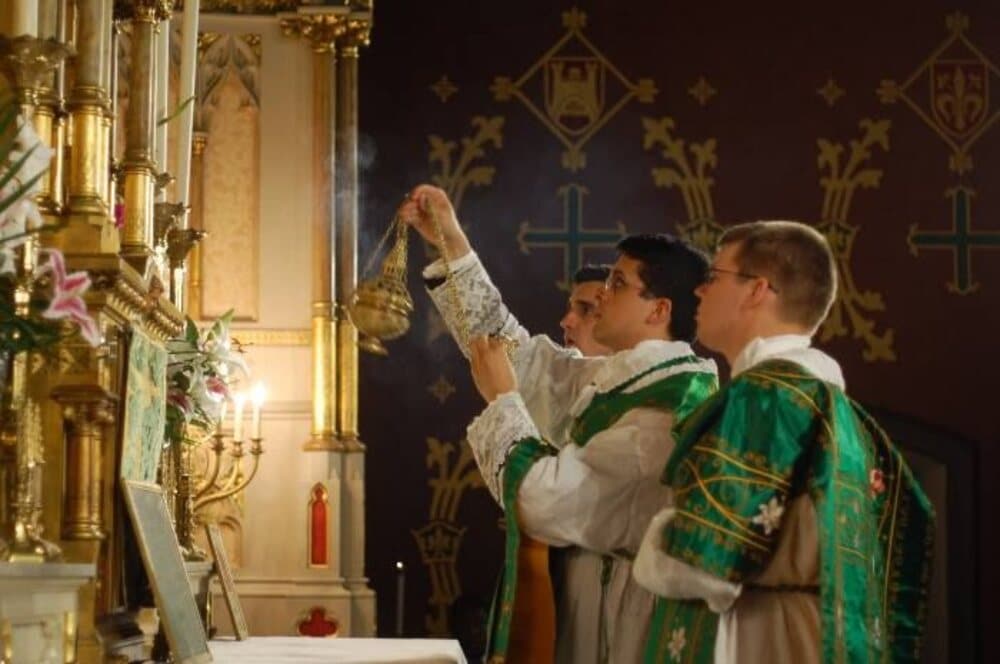
In the solemn Mass, after kissing the altar, its incensation follows.
This act is a visible expression of the interior sacrifice of those participating in the celebration. The coals that are consumed to the end symbolize the faithful who must consume their lives serving and praising God.
It signifies the good odor of Christ that we must carry and spread in every environment of our daily life: work, among friends, in the family, at university, school.
The smoke of the incense symbolizes the prayer that rises to God. It helps us to burn with love for Him so that everything that is not of God is consumed in our hearts. Our prayers, which express the desires of the heart, must be animated and purified by the fire of divine love. And they are gathered with those of all our brothers to be elevated before God. It recalls the prayer of the saints, the most pleasing perfume to the Lord.
4. Sign of the Cross and Initial Greeting
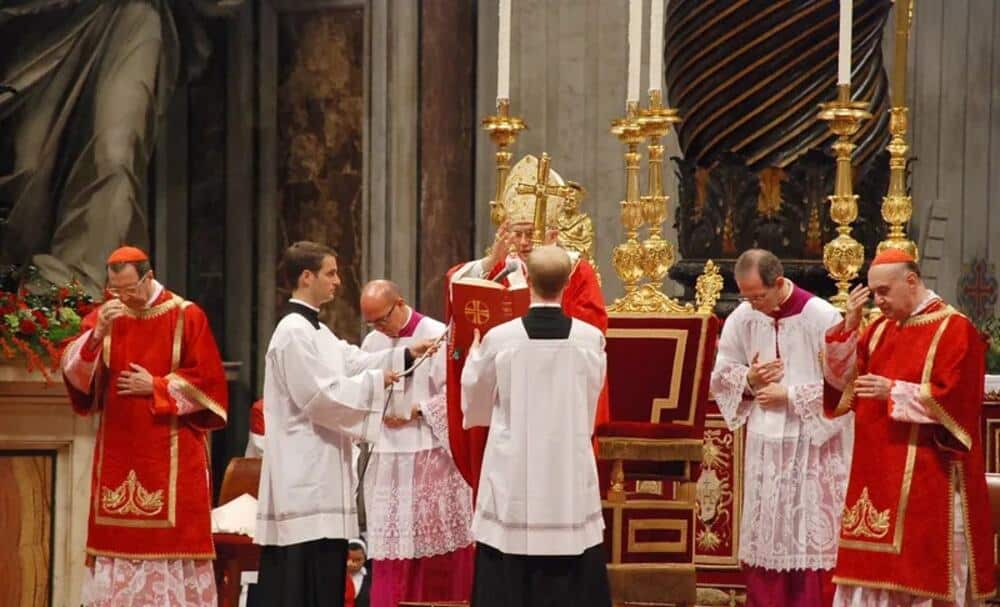
The Initial Rites continue with the invocation of the one and triune God through the cross of Christ. The celebrant and the faithful make the sign of the cross to properly begin the Holy Mass, as this renews the memory of the Lord’s sacrifice in honor of the Holy Trinity.
The priest wants to perform the sacrifice in the name of God the Father, who has sent His Son to save us; of God the Son, who has given Himself to death for us; and of the Holy Spirit, whose eternal love has been the fire that has consumed the Victim and whose breath pours the Blood of the Savior over our souls. We address the Father, through Christ we offer, and we do it in the Holy Spirit.
We should make the sign of the cross as if it were the first and last time, with devotion and love. It should be a slow, wide sign, from forehead to chest and from one shoulder to the other. Let’s avoid routines and automatisms. Let’s put our whole body, soul, heart, and thoughts into it. It should take hold of us, consecrate us, and sanctify us.
After the sign of the Cross, the priest greets the assembly and places the entire celebration under the gaze of the Holy Trinity:
5. Penitential Act

The Penitential Act allows us to see our miseries in the face of God’s holiness. We recognize His dominion, we implore, unworthy, His help and we ask Him, because we are sinners, for forgiveness.
By humbling ourselves before the holiness of God, we can measure a bit of His infinite love, which led Him to send His Only and Beloved Son to save us from sin and give us eternal life.
The priest invites us to repentance. We can do a quick examination of conscience and sincerely ask for forgiveness for our sins:
The Penitential Act consists of three moments:
1. I Confess:
The faithful acknowledge their sins before God and the community. They also plead for the intercession of angels, saints, and their brothers and sisters. We sin in thought by not conforming to God’s criteria, in word by not using our tongue as an instrument of the divine Word, in deed by not imitating Christ’s actions, and in omission by not doing all the good we could have done.
We strike our chest to express sorrow for our sins. And because we are weak, we implore the help of powerful intercessors.
2. May Almighty God Have Mercy:
The act of contrition should make us aware of the ugliness of sin and the need for divine grace to fight against it.
The priest concludes with the following prayer:
3. Lord, Have Mercy
Then, this prayer is sung or recited. In it, we recognize the majesty and extreme goodness of Jesus. It is a prayer entrusted to our Savior.
- You may be interested in: Asking for Forgiveness in Mass: A Profound Act
6. Glory Hymn
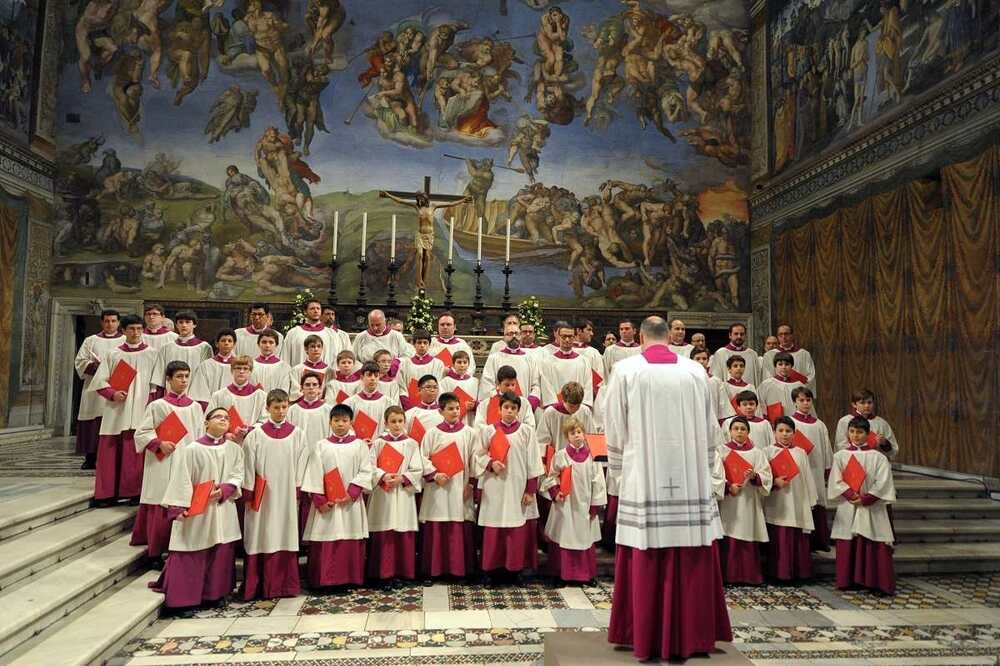
The Glory hymn is one of the oldest initial rites. It is a text inspired by the psalms and canticles of the Gospel. We sing a hymn of praise and victory over sin. Its first words were pronounced by the angels when they appeared to the shepherds to announce the birth of the Child God.
The Glory is divided into three parts. It begins with the angels’ song, then with praises to God the Father, and finally an invocation to Christ. At the end, the Holy Spirit is named. Thus it sings the honor of the Holy Trinity. It praises and gives thanks to the Father, recognizes Christ as the Son of God and Savior of humanity, in union with the Holy Spirit.
Glory is given to God and men, through the coming of the Savior, receive peace.
7. Collect Prayer

The priest, when pronouncing “let us pray,” invites the faithful to mentally join in his prayer, asking for their particular intentions. He extends his arms and then brings them together. He addresses God on behalf of the entire community, as the spokesperson of the Church and presents all the intentions of the faithful participating in the Holy Mass.
To reflect on the Introductory Rites of the Mass:
You can use the Catholic Mass Times app to find the nearest Catholic church with Mass, Confession, and Adoration schedules. It will surely help you! Download it now.
What are the initial rites of the Mass and why are they important?
The initial rites are the beginning of the Eucharistic celebration and prepare the faithful to enter into God’s presence. They include the entrance procession, the kissing of the altar, the sign of the cross, the penitential act, the Gloria, and the Collect prayer. Experiencing them with attention and recollection helps to prepare the heart for the Liturgy of the Word and the Eucharist.
How can I spiritually prepare myself before the start of Mass to better experience the Initial Rites?
To spiritually prepare yourself before Mass, you can arrive at the church a few minutes early, maintain silence and recollection, say a brief prayer asking for the grace to participate with faith and devotion, and offer the Mass for a special intention. It’s also helpful to read the day’s readings to prepare your heart and attune yourself to the liturgy.
How can I make the sign of the cross with true devotion at the beginning of Mass?
The sign of the cross is a gesture of consecration and surrender to God. To make it with greater devotion, we should do it slowly, consciously, and with faith, remembering that we are marking ourselves with the Cross of Christ and renewing our identity as children of God.
What is the meaning of the Penitential Rite and how can it be done with greater depth?
The Penitential Rite invites us to recognize our frailty and ask for God’s mercy. To experience it better, we can do a brief examination of conscience before Mass, recite the Confiteor sincerely, and receive the priest’s absolution with faith, which prepares us to listen to the Word of God with a clean heart.
What is the significance of singing the Gloria? How can we better experience that moment?
The Gloria is a hymn of praise to God, so it should be sung with joy and reverence. To do it with devotion, it’s important to remember its meaning: it’s a proclamation of God’s glory and an act of worship. Singing it with gratitude and attention to the words helps to fully experience it. Additionally, if it’s not sung but recited, it’s recommended to do so with a clear and measured voice, letting each phrase resonate in the heart.

